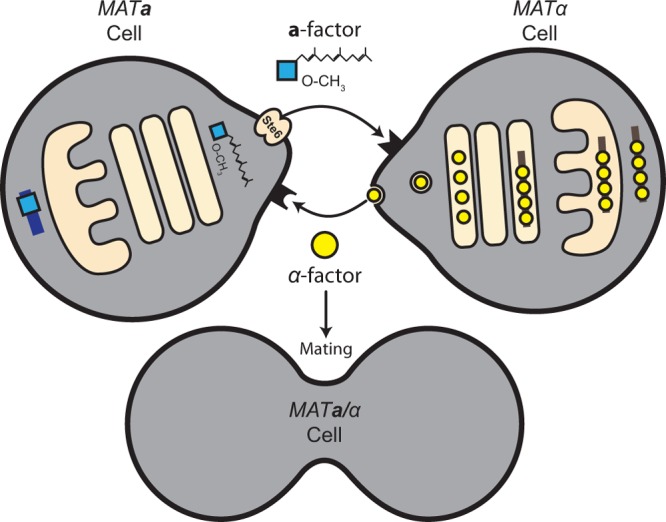Fig 1.

Overview of the biogenesis and secretion of a-factor and α-factor. MATa cells (left) secrete a-factor, a farnesylated and carboxylmethylated peptide. The a-factor precursor undergoes a series of biogenesis steps prior to export, including farnesylation, carboxylmethylation, and several proteolytic cleavages, to yield mature a-factor. These steps occur in the cytosol or on the cytosolic face of intracellular membranes. Export of a-factor occurs via a “nonclassical” secretory mechanism, mediated by the ABC transporter, Ste6. MATα cells (right) secrete α-factor, which is synthesized as a precursor containing multiple tandem copies of α-factor. The α-factor precursor traverses the classical secretory pathway and undergoes glycosylation in the ER (irregular tan shape), followed by proteolytic processing in the Golgi apparatus (tan ovals) to yield mature α-factor that travels in vesicles to the plasma membrane and is secreted. During the response of haploid yeast to mating pheromones, cells undergo morphological alterations, becoming polarized toward one another and exhibiting distinct projections, as shown. Such cells are termed shmoos. The mating machinery is localized to the shmoo tip; during mating, cells fuse at these shmoo tips to form MATa/MATα diploid cells.
